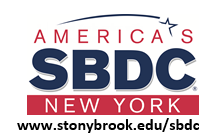
- The U.S. Small Business Administration is offering designated states and territories low-interest federal disaster loans for working capital to small businesses suffering substantial economic injury as a result of the Coronavirus (COVID-19).
- Eligibility – The applicant must be physically located in a declared county and suffered working capital losses due to the declared disaster, not due to a downturn in the economy or other reasons. Examples of eligible industries include but are not limited to the following:hotels, recreational facilities, charter boats, manufacturers, sports vendors, owners of rental property, restaurants, retailers, souvenir shops, travel agencies, and wholesalers.
- SBA’s Economic Injury Disaster Loans offer up to $2 million in assistance per small business and can provide vital economic support to small businesses to help overcome the temporary loss of revenue they are experiencing.
- These loans may be used to pay fixed debts, payroll, accounts payable and other bills that can’t be paid because of the disaster’s impact. The interest rate is 3.75% for small businesses without credit available elsewhere; businesses with credit available elsewhere are not eligible. The interest rate for non-profits is 2.75%.
- SBA offers loans with long-term repayments in order to keep payments affordable, up to a maximum of 30 years. Terms are determined on a case-by-case basis, based upon each borrower’s ability to repay.
- Criteria for a loan approval
Credit History- Applicants must have a credit history acceptable to SBA.
Repayment- SBA must determine that the applicant business has the ability to repay the SBA loan.
- Collateral requirements
-Economic Injury Disaster Loans over $25,000 require collateral which means the maximum unsecured loan amount is $25,000.
-SBA takes real estate as collateral when it is available.
-SBA will not decline a loan for lack of collateral, but requires borrowers to pledge what is available.
- Applicants can have an existing SBA Disaster Loan and still qualify for an EIDL for this disaster, but the loans cannot be consolidated.
- The Application Process – What documentation is needed:
-Completed SBA loan application (SBA Form 5 or 5C)
-Tax Information Authorization (IRS Form 4506T)
-Complete copies of the most recent Federal Income Tax Return.
-Schedule of Liabilities (SBA Form 2202).
-Personal Financial Statement (SBA Form 413).
-Other information may also be requested.




